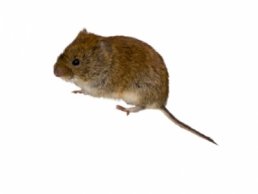
Vole Damage
These small, burrowing animals are best known for the harm they cause to turf and landscaping. Vole tunnels are most visible as snow begins to melt in spring. Over the winter, the pests live underground and create runways on the surface of yards to connect their burrow entrances.
Property owners with this pest issue may find vole holes in the lawn and disorderly pathways of grass grazed down to the ground. The rodents also leave behind droppings, eat garden crops, and strip the bark from trees and shrubs.
What Does a Vole Hole or Tunnel Look Like?
Unsightly vole tunnels and holes are the most noticeable problem associated with these pests. Residents can check for specific visual cues to know if voles are present.
Vole Tunnels
Voles dig extensive burrows underground, so people who think they see vole tunnels on the surface of lawns may actually be looking at vole runways. During the winter, the pests feed on grass under a blanket of snow. The runways they create look like thin, dirt-colored trails that snake across the yard.
Vole Holes
Holes are another visible sign of vole activity. The animals dig dime-sized entrances to their burrows around the roots of plants. Following surface runways often leads to a vole hole.
Preventing Vole Lawn Damage
Evidence of a vole problem is easy to see, but spotting these shy, nocturnal pests is rare. While homeowners might not see a large number of the rodents, that doesn’t mean they aren’t there. In fact, vole population booms are common. The pests may cause extreme issues for several years in an area, then seem to disappear.
When combined, all these factors make voles tough to combat without help. To stop vole holes and tunnels from appearing in the lawn, turn to the wildlife experts at Critter Control.



